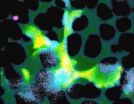(Press-News.org) For a number of years now, scientific literature has questioned whether mortality rates depend on socioeconomic differences among the population. Recently, a new study carried out in 15 European cities - including Barcelona and Madrid - detected inequalities for the majority of causes, concluding that higher levels of poverty are associated with higher mortality rates and there is a great deal of variation among areas.
Social inequality is increasingly considered to be a public health problem. However, scant research has been carried out into associating these differences with the main causes of death in European urban areas.
A new study has recently analysed this inequality in mortality for the main diseases in areas of 15 European cities (Amsterdam, Barcelona, Bratislava, Brussels, Budapest, Helsinki, Lisbon, London, Madrid, Prague, Rotterdam, Stockholm, Turin and Zurich) between 2000 and 2008.
The authors, an international group of investigators from the 12 participating countries, investigated nine specific causes of death with regard to the number of deaths and a socioeconomic deprivation index.
Circulatory system diseases were represented by ischemic heart diseases and cerebrovascular diseases; and tumours by lung, prostate (in men) and breast (in women) cancer.
Additionally, respiratory diseases were represented by influenza and pneumonia, gastrointestinal diseases by chronic liver disease and, lastly, endocrine, nutritional and metabolic disorders were represented by diabetes.
"Social inequalities in mortality have been detected for the majority of specific causes we have studied," Marc Marí-Dell'Olmo, a scientist at the Barcelona Public Health Agency, the institution running the INEQ-CITIES project, explained to SINC. "However, these inequalities varied significantly among the cities analysed."
For men, there is positive correlation between deprivation and mortality rate - the more deprivation there is, the higher the rate of mortality - in the majority of the cities and causes that were analysed; and for women, diabetes, ischemic heart disease, chronic liver diseases and respiratory diseases are also linked with deprivation in the majority of cities.
"In some cases a spatial pattern of inequality was detected in Europe," added Marí-Dell'Olmo. "These results underline the importance of implementing effective policies to mitigate them, and how important it is that these policies are adapted to the specific situation of each city."
For example, death from lung cancer is linked with deprivation in cities in the north of Europe and Kosice (Slovakia), but this was not the case - indeed, the trend was even reversed - in cities in the south of Europe. "This pattern is probably due to southern European countries being behind others with regard to the tobacco epidemic," the expert pointed out.
And in the case of breast cancer, there is negative correlation between risk and deprivation (in other words, the more deprivation there is, the lower the mortality rate) in three southern European cities: Lisbon, Barcelona and Madrid.
Deaths in Spanish cities
An online mortality atlas arose from the project, which includes the Spanish cities of Madrid and Barcelona. The Spanish capital is the second largest city after London, with 3,155,359 inhabitants (1,483,175 men and 1,672,184 women) who live in a 605.8 square kilometre area
There were 213,240 deaths in Madrid during the period studied (2000-2007): 107,236 men and 106,004 women.
For all the causes, the mortality rate was considerably higher in the centre of Madrid (Centro district).
There is also a high mortality risk among men in the south-east, particularly in Puente de Vallecas and San Blas. In the outskirts of Madrid, there is a particularly high mortality risk for women.
In 2005, 1,599,966 people were living in Barcelona (757,978 men and 841,988 women). However, its area is only 98.2 square kilometres, making it the most densely populated city that was analysed.
There were 143,952 deaths in Barcelona during the period studied (2000-2008): 70,263 men and 73,689 women. The excess number of male deaths - from any cause - is more pronounced in central areas, and along the eastern and northern parts of the city's coast.
Areas with lower mortality rates are mainly located in western areas, such as the Les Corts and Sarrià-Sant Gervasi districts. There is a lot of variation in the distribution of all the causes of death among women, with a high concentration in the coastal district in the centre of the city.
These geographical mortality patterns are similar to the different socioeconomic indicators which are also shown in the atlas.
INFORMATION:
Citation:
Marc Marí-Dell'Olmo, Mercè Gotsens, Laia Palència, et al. J Epidemiol Community Health 2015;69:432-441.
Carme Borrell, Marc Marí-Dell'Olmo, Laia Palència, el al. Socioeconomic inequalities in mortality in 16 European cities. Scandinavian Journal of Public Health, 2014; 42: 245-254
Contact:
Marc Marí-Dell'Olmo
Servicio de Sistemas de Información Sanitaria (SESIS)
Agéncia de Salut Pública de Barcelona
Tel. 93 2027775
A team comprised of scientists at VIB, KU Leuven and UZ Leuven has made significant progress in uncovering the connection between psychological factors and the immune system. Their findings are based on an investigation of a massive drinking water contamination incident in Belgium in 2010, and are now published in the leading international medical journal Gut.
In December 2010, the Belgian communities of Schelle and Hemiksem in the province of Antwerp faced an outbreak of gastroenteritis, with more than 18,000 people exposed to contaminated drinking water. During the ...
Scientists have pioneered the use of a high-powered imaging technique to picture in exquisite detail one of the central proteins of life - a cellular recycling unit with a role in many diseases.
The proteasome complex is present in all multicellular organisms, and plays a critical role in cancer by allowing cancer cells to divide rapidly.
Researchers used a technique called electron cryo-microscopy, or 'cryo-EM' - imaging samples frozen to -180oC - to show the proteasome complex in such extraordinary detail that they could view a prototype drug bound to its active sites.
The ...
This news release is available in German. Acute liver failure is a rare yet life-threatening disease for young children. It often occurs extremely rapidly, for example, when a child has a fever. Yet in around 50 percent of cases it is unclear as to why this happens. Now, a team of researchers working on an international research project headed by Technische Universität München (TUM), the Helmholtz Zentrum Munich and Heidelberg University Hospital have discovered a link between the disease and mutations in a specific gene. The researchers used whole genome ...
New research led by the University of Southampton is paving the way to protect the endangered European eel as they migrate through rivers to the ocean.
The European eel, a fish of high cultural, commercial and conservation concern, has suffered a dramatic decline over recent decades, with the number of juvenile fish returning to rivers down by over 90 per cent.
While several explanations (including overfishing, pollution and climate change) have been proposed for the cause of this demise, one of the key factors is river infrastructure, such as hydropower stations, ...
This news release is available in Japanese.
Researchers at the Okinawa Institute of Science and Technology Graduate University (OIST) have identified a system that could store quantum information for longer times, which is critical for the future of quantum computing. This study was recently published in Physical Review Letters.
Quantum computing -- which aims to use particles on the atomic scale to make calculations and store the results -- has the potential to solve some key problems much faster than current computers.
To make quantum computing a reality, ...
(NEW YORK CITY - July 1, 2015) A novel synthetic hormone that makes certain skin cells produce more melanin significantly increases pain-free sun exposure in people with erythropoietic protoporphyria, a rare, genetic disorder resulting in excruciating pain within minutes of sun exposure. Two Phase III trials, conducted in Europe and in the United States by researchers at the Icahn School of Medicine at Mount Sinai and six other U.S. sites, showed that the duration of pain-free time in the sun and quality of life were significantly improved by treatment with afamelanotide, ...
Pregnancy and motherhood are both wonderful and worrisome times - could public health campaigns and social stereotypes be contributing to anxiety for mothers? Researchers from Monash University have identified links between perinatal anxiety and social and health messages that women are exposed to during the perinatal period, the period immediately before and after birth.
In a paper recently published in Women's Studies International Forum, Dr Heather Rowe and Professor Jane Fisher from the Jean Hailes Research Unit within the School of Public Health and Preventive Medicine ...
Unwanted, intrusive visual memories are a core feature of stress- and trauma-related clinical disorders such as posttraumatic stress disorder (PTSD), but they can also crop up in everyday life. New research shows that even once intrusive memories have been laid down, playing a visually-demanding computer game after reactivating the memories may reduce their occurrence over time.
The findings are published in Psychological Science, a journal of the Association for Psychological Science.
"This work is the first to our knowledge to show that a 'simple cognitive blockade' ...
Spider-like cells inside the brain, spinal cord and eye hunt for invaders, capturing and then devouring them. These cells, called microglia, often play a beneficial role by helping to clear trash and protect the central nervous system against infection. But a new study by researchers at the National Eye Institute (NEI) shows that they also accelerate damage wrought by blinding eye disorders, such as retinitis pigmentosa. NEI is part of the National Institutes of Health.
"These findings are important because they suggest that microglia may provide a target for entirely ...
A new method for calculating the exact time of death, even after as much as 10 days, has been developed by a group of researchers at the University of Salzburg.
Currently, there are no reliable ways to determine the time since death after approximately 36 hours. Initial results suggest that this method can be applied in forensics to estimate the time elapsed since death in humans.
By observing how muscle proteins and enzymes degrade in pigs, scientists at the University of Salzburg have developed a new way of estimating time since death that functions up to at least ...


